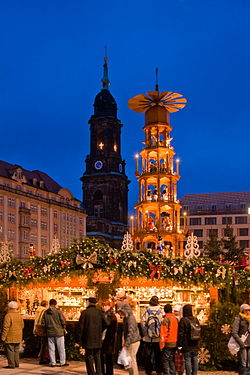


The Striezelmarkt in Dresden is one of the first genuine Christmas markets in the world. [1] Founded as a one-day market in 1434, it celebrated its 585th anniversary in 2019. Its 240 stands attract about 3 million visitors from all over the world. The annual market lasts throughout the Advent season until Christmas Eve.
